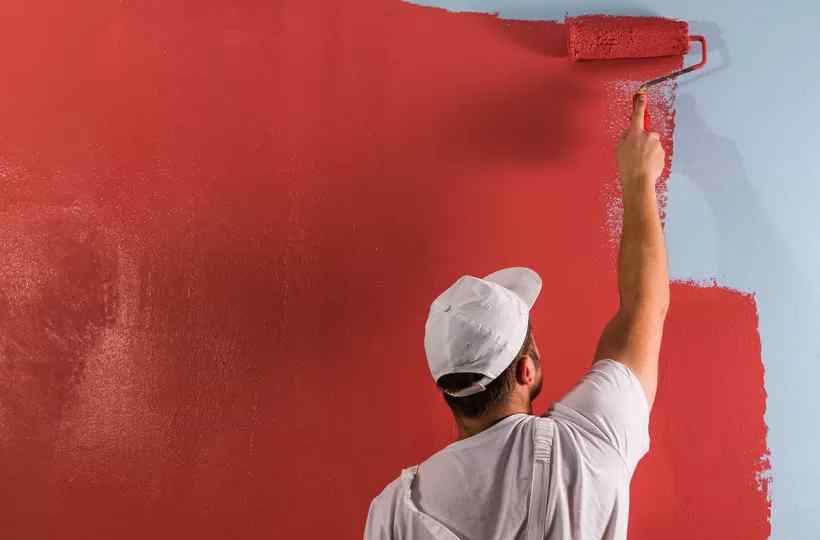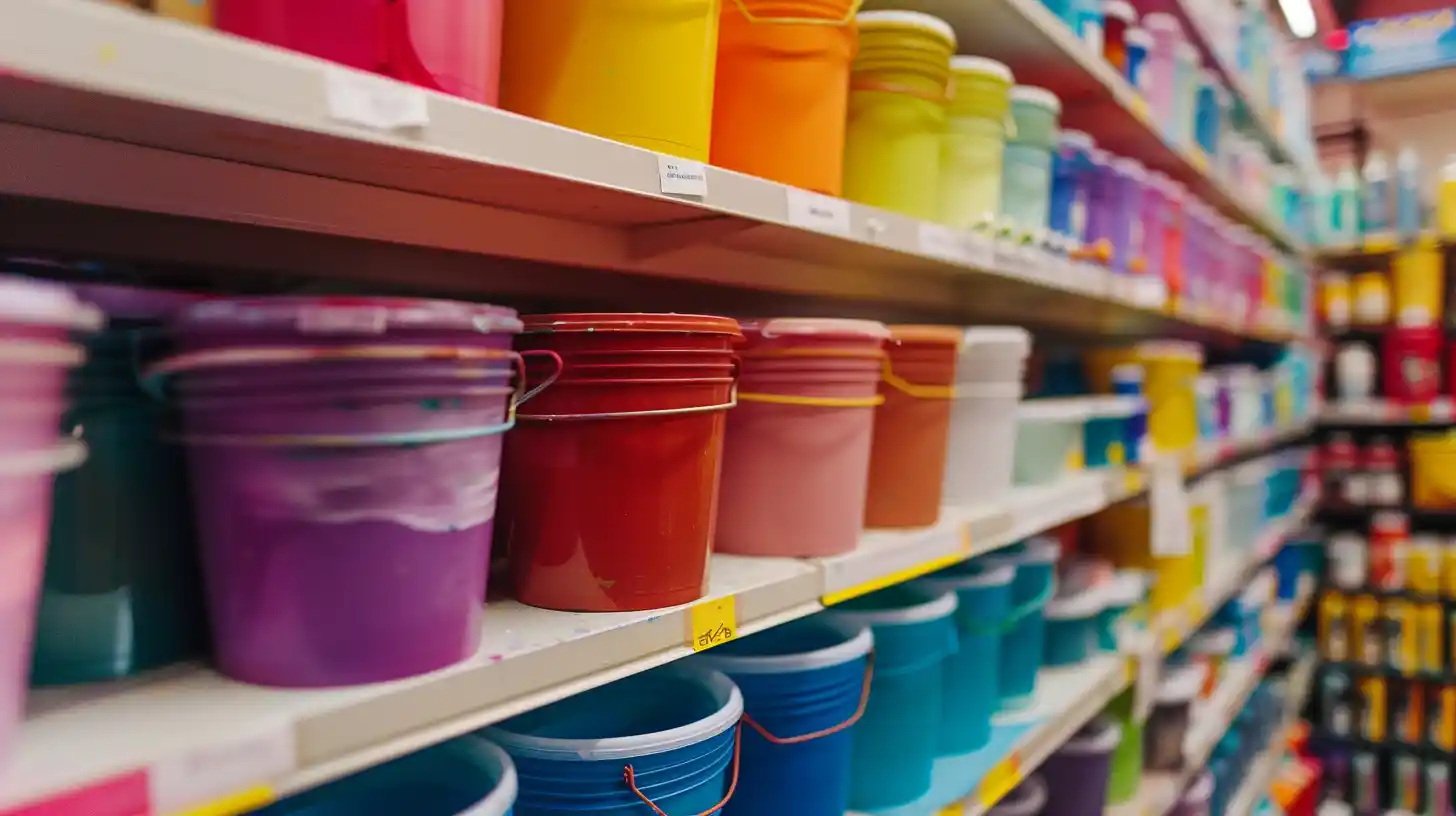Table of Contents
Quality Service Guarantee Or Painting Free

Get a rental agreement with doorstep delivery

Find the BEST deals and get unbelievable DISCOUNTS directly from builders!

5-Star rated painters, premium paints and services at the BEST PRICES!
Loved what you read? Share it with others!


Submit the Form to Unlock the Best Deals Today
Help us assist you better
Check Your Eligibility Instantly

Experience The NoBrokerHood Difference!
Set up a demo for the entire community
Synthetic Enamel Paint: Everything You Need to Know
Table of Contents
Have you ever wondered what makes some painted surfaces shiny and long-lasting? The secret is often a reliable product: synthetic enamel paint. This type of paint has been used in many homes and workshops for years and is known for its strength, shiny finish, and easy use. Whether you want to refresh borders, revamp old furniture, or protect metal surfaces, synthetic enamel paint could be just what you need.
But what is synthetic enamel paint? What is it used for? How to use this paint? And how is it different from acrylic enamel paint? Do not worry. This article will answer all these questions about synthetic enamel paint.
What is Synthetic Enamel Paint?
Synthetic Enamel Paint is an oil-based paint that sticks well, lasts long, and shines brightly for an extended period. Even though it’s called ‘enamel’, it doesn’t involve any glass—the term ‘enamel’ here is borrowed from the glass coating used on ceramics or metals. This paint can give shiny and flat finishes and be used with various primers. Synthetic Enamel Paint comes in containers and can be used as it is, without dilution.
Quality Service Guarantee Or Painting Free

Get a rental agreement with doorstep delivery

Find the BEST deals and get unbelievable DISCOUNTS directly from builders!

5-Star rated painters, premium paints and services at the BEST PRICES!
What is Synthetic Enamel Paint Used for?
Synthetic enamel paint is used for various purposes due to its durability and aesthetic appeal. Some of the common uses are:
1. Interior Walls
Synthetic enamel paint can be used in kitchens, bathrooms, and other areas exposed to moisture or requiring frequent cleaning. The paint’s glossy finish repels water and stains, making it easy to wipe clean. This can help maintain a hygienic environment in these critical areas of your home.
2. Home Decor
This durable and shiny paint is common in home decoration. It’s used on furniture, doors, and cabinets. It doesn’t easily scratch or stain, so it’s great for areas with a lot of use. It can be used on new and old surfaces and sticks well to materials like wood and metal.
3. Furniture Finishing
Synthetic enamel paint is resistant to chipping and scratching, making it ideal for high-traffic pieces like tables and chairs. Additionally, the high-gloss finish can give a luxurious look to furniture, enhancing the overall aesthetic of your home. It’s also easy to clean, making it a practical choice for furniture that is frequently used.
4. Metal Surfaces
This paint sticks well to metal surfaces, providing a protective layer that stops rust. It’s often used on railings, gates, and outdoor furniture. It’s also good for painting doors, windows, staircases, kitchens, and bathrooms.
5. Wooden Surfaces
On wooden surfaces, synthetic enamel paint acts as a protective barrier against moisture, insects, and decay. It’s commonly used on wooden doors, window frames, and skirting boards. The paint penetrates the wood grain, sealing it against damage and enhancing its natural beauty with a glossy finish.
How to use Synthetic Enamel Paint?
To use synthetic enamel paint on metal, wood, or ceramic surfaces, follow these steps:
1. Preparation
The surface needs to be clean and dry. If it is uneven, use sandpaper to smooth it. This will help the paint adhere better to the surface. For iron and steel surfaces, scrape any rust before applying the paint. Rust can cause the paint to peel off prematurely. You must also evaluate the synthetic enamel paint coverage area.
For plastered surfaces, ensure they are scorched and clean of dust or mortar. Dust and mortar can prevent the paint from adhering correctly. If there are holes, use putty to fill them in. This will give you a smooth surface on which to paint.
2. Priming
Apply a good-quality primer to the surface. This is especially important for iron and steel surfaces. The primer provides an extra layer of protection and helps the paint adhere better. It also helps prevent stains and knots from showing through the paint.
3. First Coat
Stir the paint thoroughly before use. This helps to mix the pigments evenly throughout the paint. Apply the first coat of synthetic enamel paint uniformly using a brush or a conventional spray. This will ensure an even distribution of paint. Ensure the surface is smooth and even before applying the paint. Any imperfections can show through the paint.
4. Drying
Allow the first coat to dry completely. This is important because if it is not completely dry, it can mix with the second coat and cause streaks or runs in the paint.
5. Second Coat
Once the first coat is dry, apply the second coat of paint. The second coat provides additional coverage and helps to even out any spots that might have been missed in the first coat. After the second coat, rub the surface with sharp paper to get a glossy and even look. This helps smooth out brush strokes and gives the paint a professional finish.
6. Cleaning
Clean your brushes and other tools immediately after use to prevent the paint from drying on them. Dried paint can be challenging to remove and ruin your brushes and tools. Use thinner or mineral spirits to clean oil-based paints from your brushes.
What is the Difference Between Synthetic Enamel Paint and Acrylic Enamel Paint?
Synthetic enamel paint and acrylic enamel paint are both commonly used types of paint, each with its benefits and features. While they have some things in common, it’s important to understand how they differ when choosing the best paint for your project. They differ in the following ways:
| Parameter | Synthetic Enamel Paint | Acrylic Enamel Paint |
| Base | Oil-based | Water-based |
| Finish | Glossy | Matte |
| Durability | More durable | Less durable |
| Drying Time | Takes longer to dry | Dries more quickly |
| Usage | Mostly used for exterior walls | Used for interior walls |
| Colour Retention | Tends to turn yellow over time | Retains its colour |
How to Choose the Right Synthetic Enamel Paint?
Choosing the correct synthetic enamel paint involves understanding your requirements and the properties of different paints. Some of the key factors to consider are:
1. Purpose of the Paint
The purpose of the paint determines the type of paint you should choose. If you’re painting a high-traffic area like a hallway or a kitchen, you’ll need paint that can withstand frequent cleaning and touching.
The paint must resist weather conditions such as UV rays, rain, and temperature changes for outdoor projects. For metal surfaces, you might need a paint with rust-preventing properties.
2. Colour and Finish
The colour of the paint should match or complement the other colours in the space. You should consider the psychological effects of synthetic enamel paint colours. For example, blue can be calming, while red can be energising. The finish of the paint also plays a role.
Glossy finishes reflect light, making a space appear larger but highlighting imperfections. Matte finishes, on the other hand, absorb light and hide imperfections, but they can be more challenging to clean.
3. Quality of the Paint
The quality of the paint can affect the application process and the result. High-quality paints typically have better coverage, meaning you might need fewer coats and, thus, less paint. They also tend to be more durable, so they stand up better to cleaning and general wear and tear.
While high-quality paints may be more expensive upfront, the potential savings in time and longevity can make them a more cost-effective choice in the long run.
4. Environmental Impact
Some paints contain volatile organic compounds (VOCs), which can harm the environment and human health. Low-VOC or VOC-free paints are a more environmentally friendly choice. They also tend to have less odour, making the painting more pleasant.
5. Manufacturer’s Instructions
The instructions can provide important information about the paint. This might include the recommended number of coats, drying time between coats, and the best application method (e.g., brush, roller, or spray). Following these instructions can help you choose the right paint.
What are the Tips to Keep in Mind While Choosing Synthetic Enamel Paint?
Choosing the correct synthetic enamel paint can be a crucial step in achieving the desired finish for your project. Some tips to keep in mind are:
1. Understand the Surface
The surface you’re painting on is significant in the synthetic enamel paint you choose. Some paints adhere better to certain surfaces. Always ensure the paint you choose suits the surface you intend to paint on.
2. Check the Durability
Synthetic enamel paints are known for their durability, but not all are created equal. Consider the painted surface's conditions and choose a paint that can withstand those conditions.
3. Consider the Finish
Synthetic enamel paints come in various finishes, including gloss, semi-gloss, and matte. The choice of finish can affect the appearance of the painted surface, so choose one that aligns with your desired aesthetic.
4. Look at the Drying Time
Different synthetic enamel paints have different drying times. If you’re working on a project with a tight timeline, you might want to choose a paint that dries quickly.
5. Evaluate the Synthetic Enamel Paint Rate
While it might be tempting to go for the cheapest option, remember that the quality of the paint is often reflected in synthetic enamel paint price. It might be worth investing in a slightly more expensive paint to ensure a better finish and longer-lasting results.
How NoBroker Can Help You?
NoBroker provides a variety of home improvement services, including painting. It is committed to delivering the highest quality of service. They use top-quality, specialised, and safe chemicals for painting. This ensures the vibrant and glossy finish that synthetic enamel paints are known for and enhances the durability and longevity of the paint job.
NoBroker uses professional and mechanised equipment for painting. This technology allows for a smooth and even application of paint. Our professional approach ensures that the result is as close to perfection as possible.
We also cater to a wide range of services catering to diverse painting needs. We can handle different types of paint, including synthetic enamel paint, and advise you on the best choices for your specific needs.
Moreover, we place a high emphasis on customer satisfaction. We provide timely and efficient service, maintain clear and open communication, and are ready to address any concerns or queries you may have. This commitment to customer satisfaction makes the entire process seamless and stress-free for you.
Synthetic enamel paint is a versatile and durable option for various applications. Its high-gloss finish, moisture resistance, and ease of application make it a popular choice. So, whether you’re painting a piece of furniture or the walls of your home, synthetic enamel paint can provide a smooth, hard finish that will stand the test of time.
So, if you’re thinking about repainting your home with synthetic enamel paint, you might want to check out NoBroker. They provide a wide array of painting services inside and outside your home to give your space a new look. Their team of painters are experts in all aspects of painting, and they use top-notch materials and take great pride in their work.
Frequently Asked Questions
Synthetic enamel paint provides a more durable finish than traditional oil-based paints.
It can be applied to various surfaces, including wood, metal, concrete, and masonry.
Drying times vary depending on temperature and humidity, typically from a few hours to overnight.
Yes, synthetic enamel paint can be used on surfaces previously painted with a different type of paint, but proper surface preparation is necessary to ensure adhesion and longevity.
Yes, it provides good resistance to stains, moisture, and mildew growth, making it suitable for high-moisture areas like kitchens and bathrooms.
Recommended Reading

January 16, 2025
5113+ views

January 15, 2025
5087+ views

Asian Paints Ultima 20 Litre Price 2025
December 31, 2024
13169+ views

Asian Paint 10 Litre Paint Price 2025
December 30, 2024
14806+ views

Tractor Emulsion 20 Litre Price 2025
December 26, 2024
27311+ views
Loved what you read? Share it with others!
NoBroker Painting Testimonials
Before this festive season
get your house painted
Most Viewed Articles

40+ Best Stunning Two Colour Combinations for Bedroom Walls to Elevate Your Space in 2025
December 31, 2024
308783+ views

Top 25 Outside Color Combinations with Colour Codes for a Stylish Home in 2025
December 27, 2024
127141+ views

Asian Paint Price 20 Litre: Complete Guide to Different Variants and Costs in 2025
December 17, 2024
57427+ views

24 Latest Main Gate Colour Combinations for a Modern Look in 2025
December 28, 2024
45002+ views

Top Asian Paints Colour Codes: Transform Your Home with Latest Colours 2025
December 17, 2024
39763+ views
Recent blogs in
Berger Walmasta 20 Ltr Price List for Different Variants in 2025
January 24, 2025 by Jessica Solomon
Top 20 Kitchen Cupboard Colour Ideas For Modern Kitchen Space in 2025
January 24, 2025 by Ananth
Asian Paints Apex Shyne 20 Litre Price List for Different Variants in 2025
January 24, 2025 by Ananth
26 Best 3D Wall Painting Design Ideas for a Stunning Home Decor in 2025
January 24, 2025 by Jessica Solomon
Top 20 Dark Pink Colour Combinations
January 16, 2025 by NoBroker.com




Join the conversation!